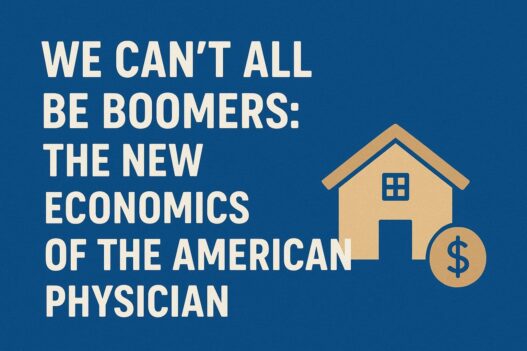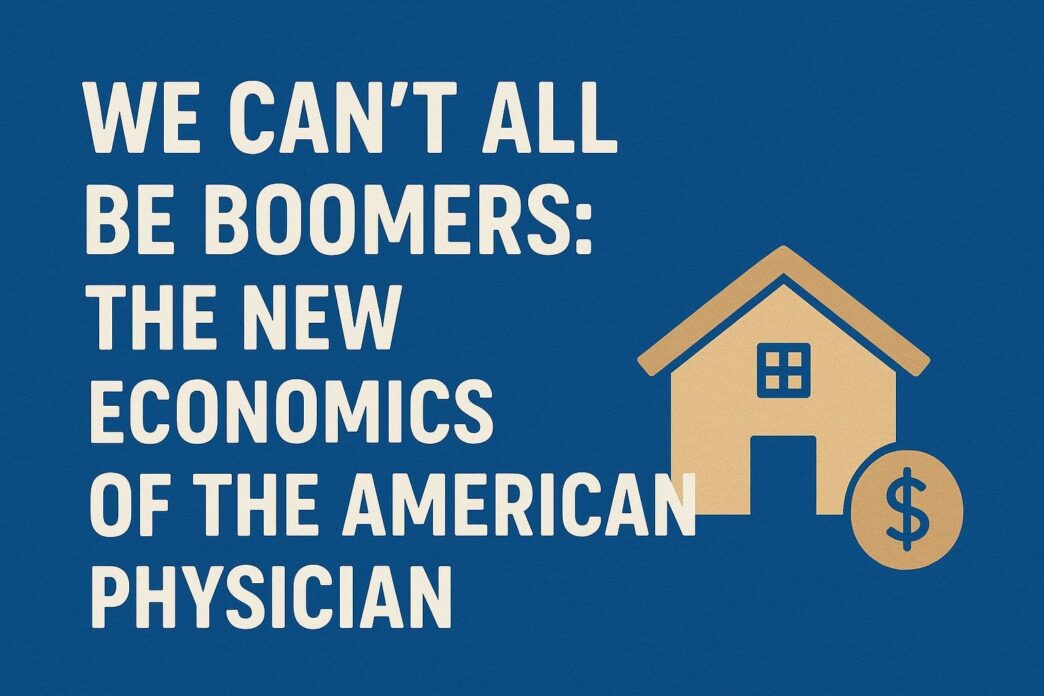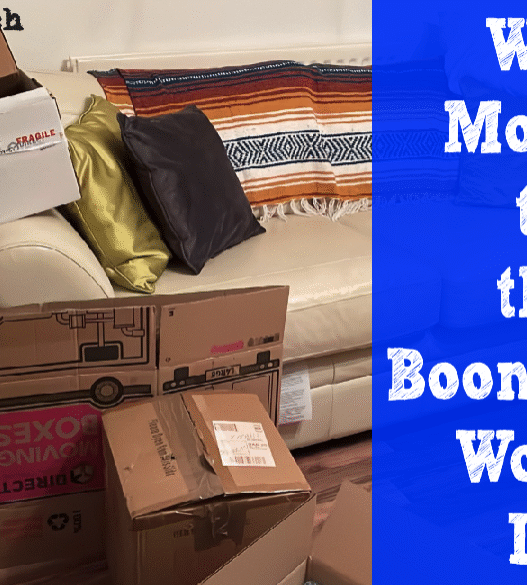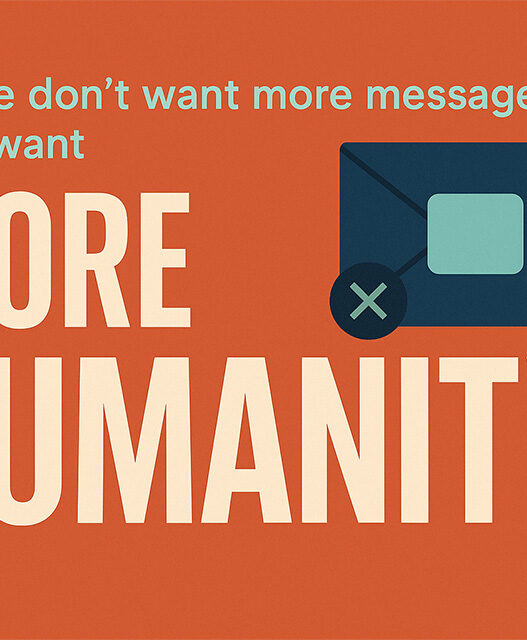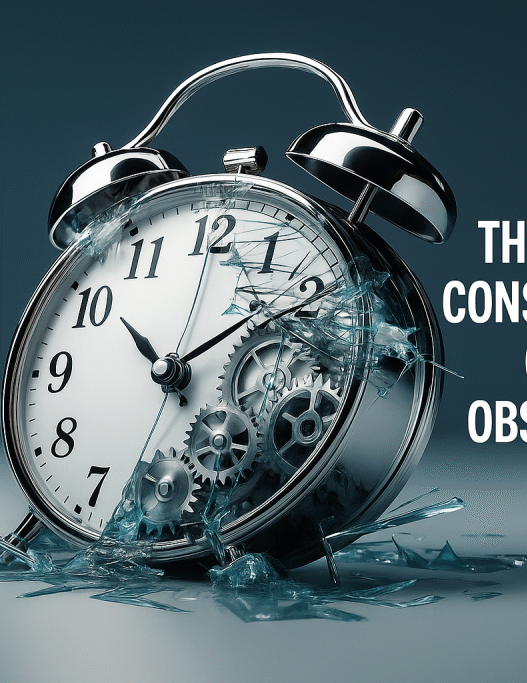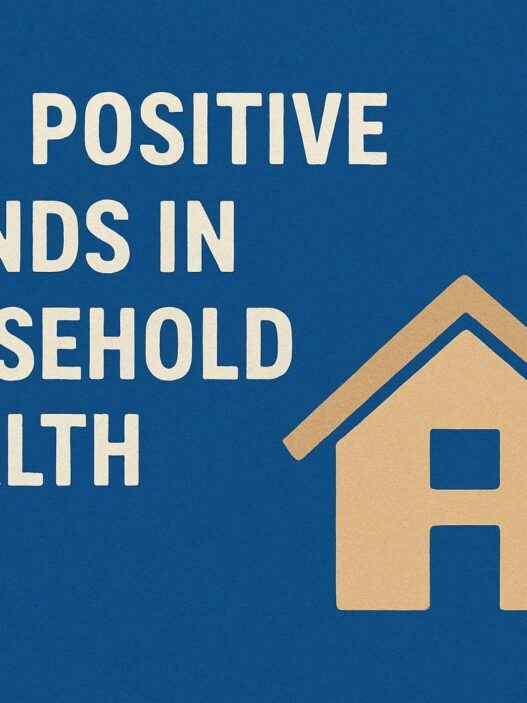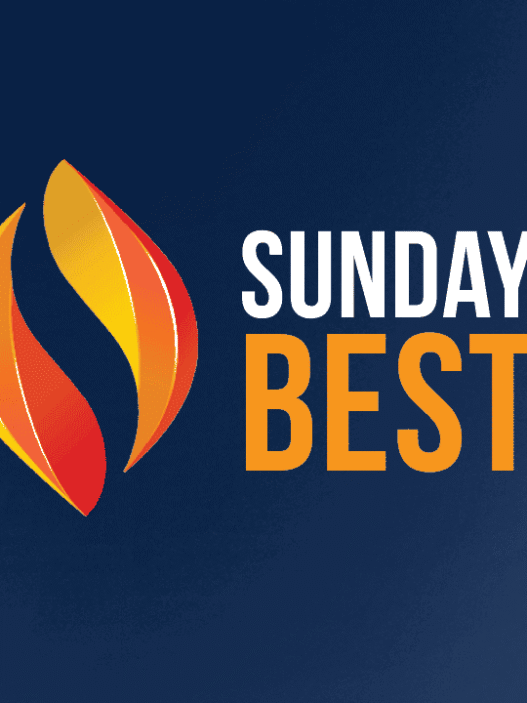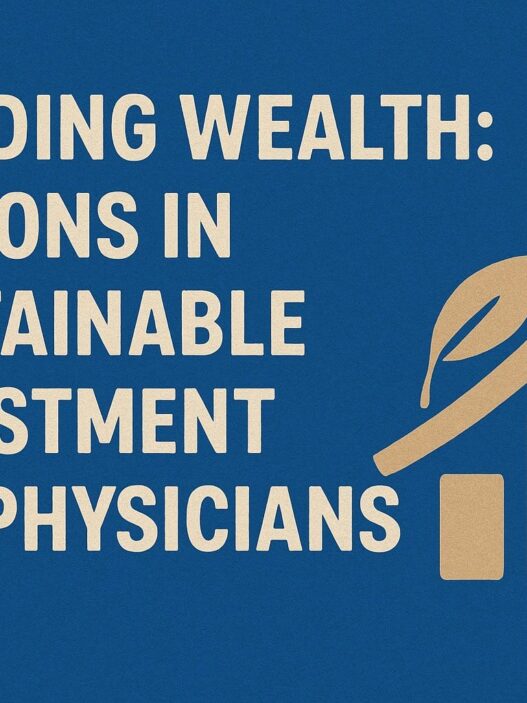In 2022, the median sale price for a U.S. single-family home was 5.6x the median household income, which is the highest ratio ever recorded.
Pandemic-related factors were key in this topsy-turvy economy, but whatever the case, one thing became clear. That old chestnut of “buy early, build equity, and you're safe” hasn't been true for a while now.
And our parents' financial advice? That has aged like milk.
For many millennial physicians, the wake-up call has been real. You can pull in six figures, grind through extra call shifts, moonlight in telemedicine, and still feel like you're chasing phantom security.
The boomer financial playbook that touted a steady job, cheap debt, homeownership, and pensions — none of that is as viable in today's economy.
But where exactly do the old rules misfire for today's high earners? And how can you build a leaner, sharper financial structure that doesn't rely on fairy tales? Let's discuss.
Beyond Stocks and Bonds: Why Home Equity Could Be a Smart Addition to Your Investment Portfolio
The Boomer Playbook Worked in a World That No Longer Exists
What seems like a far-fetched fantasy today used to be a system that (largely) worked.
When our parents or mentors talked about buying homes, investing steadily, and retiring with confidence, they did so earnestly because there was a time when that framework was feasible.
That is no longer the case.
Back then, housing markets were more local, less speculative, and more tied to regional industry cycles. In 1985, many U.S. metro areas had a home-price to income ratio of 3.5x.
Today, the national median has risen to 5x. And we can't just chalk that up to inflation either. The buying power of the average American has been structurally reallocated.
Between 1985 and 2025, median home prices increased by 403%, while median incomes increased by 252%. In other words, home prices pulled ahead of wages.
Wage growth and job mobility used to reward risk. Switching employers often came with substantial raises. Now, in many sectors, that premium has compressed. Employers operate leaner, promotion tracks are flatter, and internal growth isn't guaranteed.
Then there's debt. Many physicians start their careers already carrying six-figure debt, what with medical training, college, board prep, and licensing (among other things) to account for.
Medscape reports that 73% of recent medical graduates carry educational debt. In many cases, the interest payments alone consume what was once thought of as “discretionary surplus.”
And inflation, healthcare costs, licensure compliance, payer audits — those are all invisible taxes eating into your margin.
So the old advice: “buy a home, stay put, save modestly, avoid risk” relies on assumptions that no longer hold. Yes, it's well-meaning advice, but it could silently sabotage your financial future.
In case you missed it: The Reality of Changing U.S. Real Estate Prices
Why the Old Rules Misfire
Because physician finances differ from most people's, the gaps between the game plan and reality are more acute for many of us.
Homeownership
Yes, owning a home offers stability, forced amortization, and personal control. But at today's valuations, it also carries enormous downsides in the form of repair costs, property taxes, depreciation, and illiquidity.
If you relocate, you may end up selling at a loss or carrying two mortgages. It takes a lot more than just your name on the deed for homeownership to function as a safety net today.
Job loyalty and staying the course
Many physicians assume that sticking with one hospital or health system and climbing the ranks is safe. But systems merge, reimbursement models change, administrators cut heads, and most pressingly, leaps in tech demand different skills.
That trusted institution today could reassign you tomorrow. And the incremental gain from renegotiation or switching may no longer justify the transition cost.
Debt-avoidance as virtue
Boomers often assumed all debt was bad. In modern finance, that's dogma. A low-cost mortgage, business loan, or carefully structured leverage can amplify financial growth.
Even billionaires do it. Instead of selling assets and paying capital gains, they borrow against their portfolios to access liquidity while deferring taxes, in effect, using the bank's money to stay rich without triggering the IRS. The key is knowing which debt adds optionality and which debt crushes it.
Extra hours = extra payoff
In the old model, every extra shift translated to more take-home pay. Now, administration, credentialing delays, payer denials, and taxes all want a piece of your marginal return. Your extra hour might net little else other than burnout.
Not to say that working extra shifts isn't admirable, it's just a question of whether it's even worth it anymore.
Retire cleanly at 65
Our grandparents could count on pensions, Social Security, and their modest savings. But those guarantees are brittle now. Longevity, rising health costs, and funding gaps are all pushing us into 30+ years of post-career life.
Many modern physicians embrace phased retirement, consulting roles, or gradual tapering instead of one final cutoff.
Save modestly (10%)
In eras of low inflation and manageable debt, 10% could do the job. Today, it's unlikely to be enough. Between rising cost structures, debt burdens, lost opportunities, and compounding inflation, that rate is too tame for most high earners.
Many planners now recommend 15–20% or more (especially for physicians), allocated aggressively across vehicles, not just cash.
The Millennial Physician's Reality
Millennials were supposed to be the generation that fixed the broken systems. Instead, many of us feel we've inherited the liabilities.
A typical new physician may walk into practice with $200,000+ in student debt, a large mortgage ahead, and minimal startup capital.
They generate high revenue, but their real constraints are regulatory friction, staff costs, insurance delays, and capital lock-in.
Sure, net worth figures look good — Medscape's 2023 Physician Wealth & Debt Report shows 59% of physicians reporting household net worth $1 million or more.
That sounds enviable, until you realize net worth aggregates home equity, investments, and illiquid assets. Behind that facade, 61% still carry mortgage debt, 33% have car loans, and 25% hold credit card balances.
Only about 21% continue carrying student loans, but those who have paid them off, newer mortgages or business loans often replace education debt. The result is high nominal wealth with low functional flexibility.
You feel the tension daily. You may take extra shifts only to see your discretionary cash unchanged.
You may remain in a home you dislike simply because exiting feels financially reckless. You delay sabbaticals or family planning because every margin feels fragile.
Over time, all of that breeds resentment, not toward medicine, but towards the status quo. It chips away at identity, energy, and purpose.
Old Enough to Remember Optimism, Young Enough to Know Better
Boomers believed in the system. Gen Z believes the system failed them.
Millennials occupy the rocky middle. They once believed, got burned, and have now adapted.
Fortune reports that 70% of Gen Z say financial anxiety keeps them up at night, which can mean that they're either bed rotting, doom-scrolling, or avoiding budgets altogether.
That's not youthful dramatics, it's the psychological fallout from a generation told “you'll be fine” when, actually, that was a lie.
43% of Gen Z and 41% of millennials experience “money dysmorphia”, a distorted view of one's financial reality, where no matter how well one does, it never feels enough.
That misalignment between perception and reality fuels insecurity, under-saving, and overextending.
For most millennials, living through one crisis after another forced them to recalibrate. Many of us learned the hard way that the only way to survive was to optimize for flexibility, reset life expectations, and resist old definitions of success.
Financial Engineering for a Volatile Century
Nostalgia is seductive, but it's also a trap. Your real asset now is adaptability. If the rules changed, don't pretend they didn't. Here's how you can revamp your financial plan:
Trajectories instead of yes/no decisions
You want paths you can exit gracefully. Buy homes you can downsize or rent; accept roles you can wiggle out of. Don't entrench yourself behind a wall you can't scale.
Compound intellectual capital, not just cash
Time and domain expertise are your rarest resources. Deploy them into consults, writing, partnerships, and adjuncts. Build income streams that scale beyond direct clinical hours.
Refine debt usage
Every debt must carry its own return. If a loan funds a revenue-generating expansion or property that holds an optional exit, it's a tool. If it sacrifices your breathing room, it's a burden. Track coverage, refinancing flexibility, and downside scenarios.
Hold liquidity sacred
Home equity is seductive. But in a downturn, it won't cash your checks. Keep cash or near-cash reserves as your peace-of-flexibility buffer so you can respond to opportunities or shocks.
Design retirement as a continuum
Retirement isn't a day; it's a transition, sometimes a drawn-out one. Move from full clinical to advisory, teaching, writing, or part-time roles. Build phases so you control the cadence and don't let burnout or market risk surprise you.
Ritualize recalibrations
Every few years, stress-test your architecture. Ask: “What if I lose 20% of my income?” “Could I exit my home in five years?”
“Which debt is strangling me?” Rigid strategy often fails, but adaptive structures endure the test of time— and volatility.
To begin with, you ought to re-examine your biggest constraints first. If a mortgage or car loan forces you to stay somewhere you'd leave if you could, that's a budget prison that you need to either restructure or refinance.
Run exit scenarios for your home before you buy. Treat windfall income (bonus, side work, extra shifts) as capital to redeploy, not to take on new liabilities.
Launch one nimble side project in your niche; even if it doesn't knock it out of the park, it builds optionality. Build a scenario for phased retirement now while you have the extra energy. It doesn't need to be set in stone; it just needs to exist.
Lastly, track not just net worth, but how many months your lifestyle holds up without active income. That's your real freedom metric.
Suffice it to say, we can't all be boomers. The math just won't let us. But we can be smarter. We can break away from the dated scripts they passed down and build a framework that actually works in 2025.
The old rules didn't fail because of moral weakness. They failed because reality changed. Millennial physicians already live that truth. Now it's up to Gen Z to forge their own path.
So, how's your parents' financial advice holding up?
Be honest. Did you dodge debt, double down, or discover that “buying the dip” was more like tripping over it? Drop your experiences in the comments. Let's swap survival strategies for the economy the boomers forgot to warn us about.
Learn about the Five Factors That Determine Success in Retirement
Frequently Asked Questions
Why doesn't my parents' financial advice work anymore?
Because the economy they built wealth in doesn't exist anymore. Boomers bought homes when median prices were three times the average income. Today, it's closer to five.
They had pensions, lower tuition, and affordable healthcare. Millennials got student loans, gig work, and inflation with trust issues. The rules changed, but the rhetoric didn't.
Is all debt bad?
No. That is one of the biggest financial myths inherited from earlier generations. Low-interest debt can be a powerful tool for leverage and liquidity.
Billionaires often borrow against their assets to fund investments and avoid triggering taxable events. The key is to use debt strategically, not emotionally.
Should I invest aggressively like boomers did in the '80s and '90s?
Not blindly. The market landscape is very different now, with higher volatility, slower wage growth, and a different interest rate environment.
The S&P 500's roaring decades of double-digit returns are not guaranteed to repeat. Smart investors balance risk with flexibility, not nostalgia.
Why does buying a home feel impossible compared to my parents' era?
Because it is. Between 1980 and 2025, U.S. home prices have climbed more than 400%, while wages have barely kept pace.
Add in tight supply, institutional buyers, and rising mortgage rates, and the math gets ugly fast. Ownership is still possible, but it takes smarter timing and alternative routes to build equity.
Is FIRE (Financial Independence, Retire Early) still realistic in this economy?
Yes, but perhaps not in the minimalist sense that defined its early days. For high earners like physicians, FIRE now means controlling how and when you work, not necessarily retiring at 40. The math still works if the goal shifts from early retirement to early autonomy.
What is the modern rule of thumb for financial stability?
Flexibility matters more than rigidity. Diversify income sources, automate savings, and align spending with long-term goals rather than social comparison.
The old idea of “set it and forget it” investing is outdated. Active awareness without panic is the new advantage.
Why do boomers still insist their way works?
Because it did work for them. They came of age during a postwar boom that offered affordable housing, expanding opportunity, and cheap credit.
What is one financial move millennials should make that boomers never had to?
Protect your mental bandwidth. Modern finance moves at light speed, like crypto, real estate, side hustles, inflation, and AI stocks. Automation and passive income are ways to stay sane in this economy. The real mark of success is clarity, not constant hustle.








